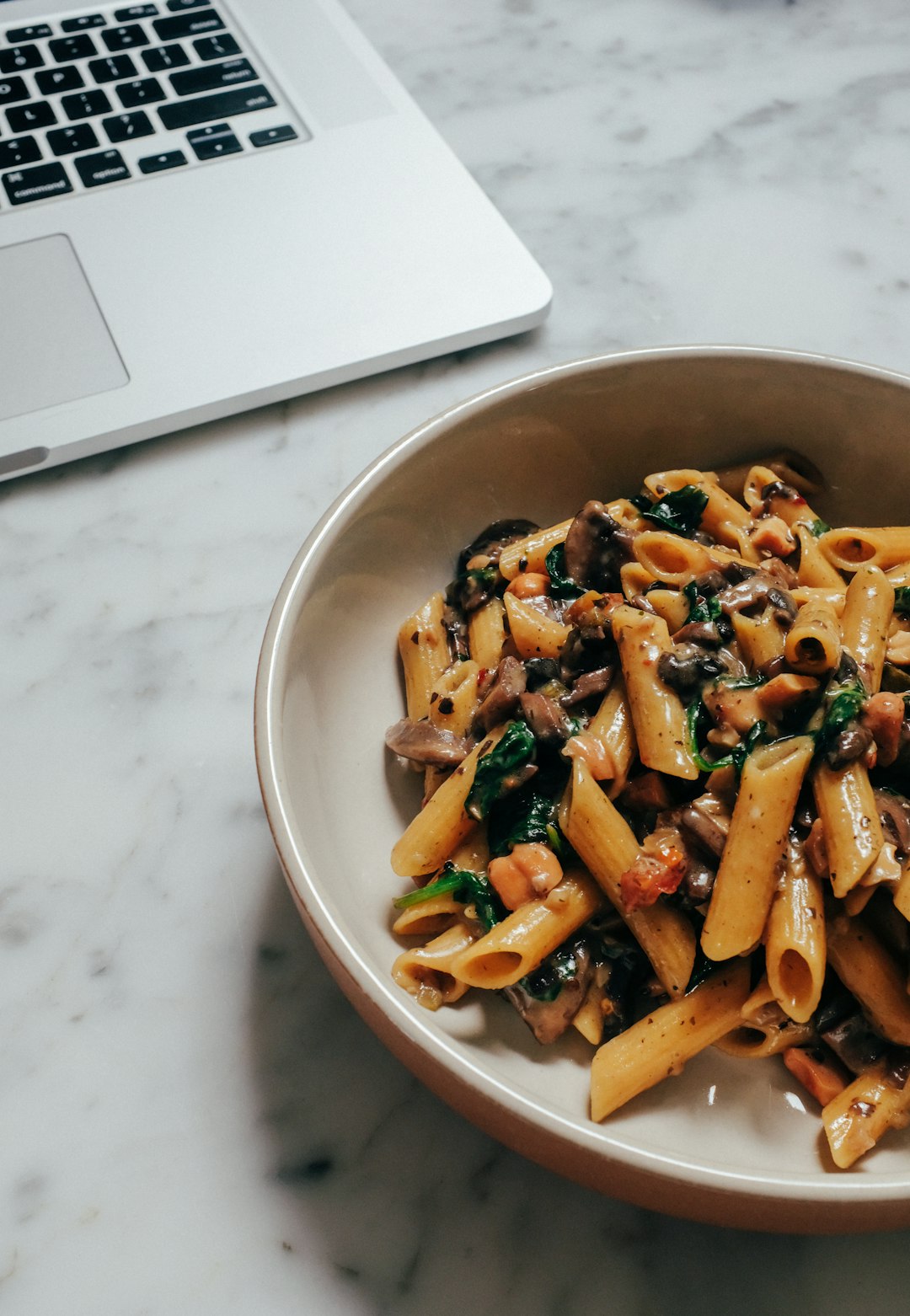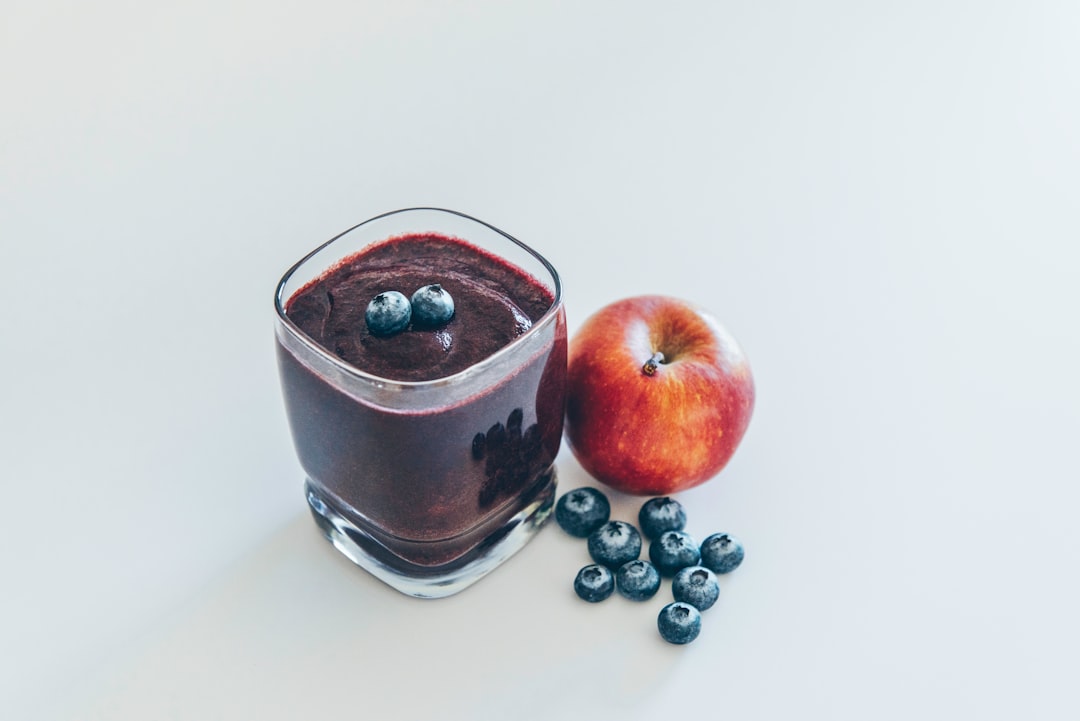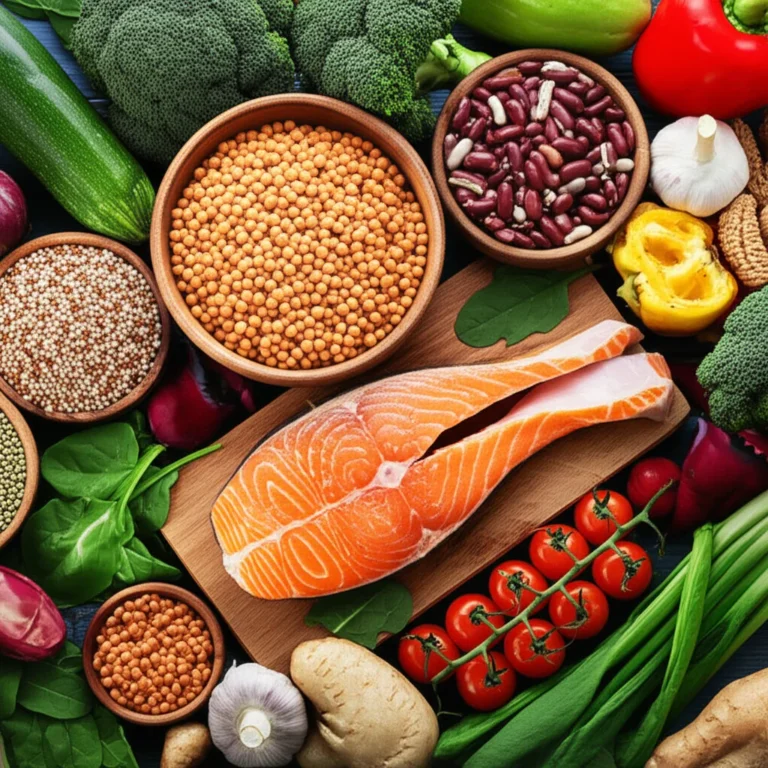Support our educational content for free when you buy through links on our site. Learn more
How Does a Flexitarian Diet Differ from a Vegetarian Diet? 🤔

Are you curious about the differences between a flexitarian diet and a vegetarian diet? You’re not alone! With the rise of plant-based eating, many people are exploring their options and trying to find the best fit for their lifestyle. Did you know that nearly 40% of Americans are now incorporating more plant-based meals into their diets? This shift is not just a trend; it’s a movement towards healthier living!
In this article, we’ll dive deep into the nuances of these two popular dietary choices, exploring their benefits, variations, and how they can impact your health. Whether you’re considering a flexitarian approach to ease into plant-based eating or you’re curious about the strictness of vegetarianism, we’ve got you covered! So, grab a snack, and let’s get started on this delicious journey of discovery! 🌱
Key Takeaways
- Flexitarian diets emphasize plant-based foods while allowing for occasional meat consumption, making them more adaptable than strict vegetarian diets.
- Vegetarian diets exclude meat entirely but come in various forms, including lacto-vegetarian, ovo-vegetarian, and pescatarian.
- Both diets offer numerous health benefits, including improved heart health and weight management.
- Transitioning to a flexitarian lifestyle can be easy and enjoyable with the right approach and mindset.
If you’re ready to explore the world of plant-based eating, check out our recommended flexitarian cookbooks and plant-based products to kickstart your journey! 🍽️
Table of Contents
- Quick Tips and Facts
- Understanding the Flexitarian Diet vs. Vegetarian Diet
- What is a Flexitarian Diet?
- Exploring the Vegetarian Diet: Variations and Types
- What are the Benefits of a Flexitarian Diet and How Does it Impact Your Health?
- Is One Variation of the Vegetarian Diet Better Than Another?
- How Do I Know if the Flexitarian Diet is Right for Me?
- Tips for Transitioning to a Flexitarian Lifestyle
- Common Misconceptions About Flexitarian and Vegetarian Diets
- Find a Doctor: Navigating Nutritional Guidance
- Privacy Preference Center: Your Health, Your Data
- Conclusion
- Recommended Links
- FAQ
- Reference Links
Quick Tips and Facts
- Flexitarian diets are incredibly adaptable: You can adjust the frequency of meat consumption to fit your preferences and lifestyle. 🍔🥬
- Going flexitarian doesn’t have to be all or nothing: Start by incorporating one or two meatless meals a week and gradually increase it from there. 🌱
- Focus on nutrient-rich plant-based foods: Load up on fruits, vegetables, whole grains, legumes, nuts, and seeds to ensure you’re getting a wide range of vitamins and minerals. 🍎🥦🥑
- Don’t be afraid to experiment with new cuisines and recipes: Vegetarian and flexitarian cooking can be incredibly delicious and diverse! 🌮🍣🍝
- Listen to your body and adjust your diet accordingly: If you’re feeling tired or sluggish, you may need to increase your intake of certain nutrients. 🤔
Learn more about the flexitarian diet and its benefits!
Understanding the Flexitarian Diet vs. Vegetarian Diet
The world of plant-based eating can feel like a jungle sometimes, with terms like “vegan,” “vegetarian,” and “flexitarian” thrown around. It’s easy to get lost! 🌿🤯
Let’s clear the air and explore the key differences between a flexitarian diet and a vegetarian diet:
Flexitarian Diet: The “Mostly” Vegetarian
Think of the flexitarian diet as the friendly, approachable cousin of vegetarianism. It’s all about adding more plant-based goodness to your plate without completely swearing off meat.
As Dawn Jackson Blatner, a registered dietitian, puts it, “This is more about adding plant-based foods to your diet versus restricting meat.”
Here’s the gist:
- Emphasis on plant-based foods: Fruits, vegetables, whole grains, legumes, nuts, and seeds take center stage. 🥗
- Meat is allowed, but in moderation: Think of it as a flavorful accent rather than the main event. 🍖
- Flexibility is key: You decide how often and how much meat you want to consume. Some flexitarians might have meat once a week, while others might opt for a couple of times a month. 🗓️
Vegetarian Diet: The Plant-Based Powerhouse
Vegetarian diets, on the other hand, draw a firmer line in the sand when it comes to animal products. While there are variations within vegetarianism, the common thread is the exclusion of meat, poultry, and fish.
Let’s break down the different types of vegetarian diets:
- Lacto-vegetarian: Includes dairy products like milk, cheese, and yogurt, but excludes meat, fish, poultry, and eggs. 🥛🧀
- Ovo-vegetarian: Includes eggs but excludes meat, poultry, seafood, and dairy. 🍳
- Lacto-ovo vegetarian: Includes both dairy and eggs but excludes meat, fish, and poultry. 🥛🍳
- Pescatarian: Includes fish but excludes meat and poultry, dairy, and eggs. 🐟
- Vegan: The most restrictive type of vegetarian diet, excluding all animal products, including meat, poultry, fish, eggs, and dairy. 🌱
What is a Flexitarian Diet?
We’ve already dipped our toes into the world of flexitarianism, but let’s dive a little deeper, shall we? 🤿
Imagine a plate filled with vibrant veggies, hearty whole grains, and a sprinkle of lean protein. That’s the essence of a flexitarian diet! It’s about embracing a way of eating that prioritizes plant-based foods while still allowing for the occasional indulgence of meat.
Think of it this way:
- It’s not about deprivation: You’re not restricting yourself or feeling guilty about enjoying a burger every now and then. It’s about finding a balance that works for you and your taste buds. 🍔
- It’s about adding, not subtracting: Instead of focusing on what you “can’t” eat, shift your mindset to all the amazing plant-based foods you can add to your plate. 🥑🍆🍠
- It’s a journey, not a race: There’s no need to go from meat-lover to full-fledged vegetarian overnight. Start by incorporating more plant-based meals into your week and see how you feel. You might be surprised at how much you enjoy it! 😊
Exploring the Vegetarian Diet: Variations and Types
We’ve already touched upon the different types of vegetarian diets, but let’s take a closer look at what makes each one unique:
| Type of Vegetarian Diet | Includes | Excludes |
|---|---|---|
| Lacto-vegetarian | Dairy products | Meat, fish, poultry, eggs |
| Ovo-vegetarian | Eggs | Meat, poultry, seafood, dairy |
| Lacto-ovo vegetarian | Dairy products and eggs | Meat, fish, poultry |
| Pescatarian | Fish | Meat, poultry, dairy, eggs |
| Vegan | Plant-based foods only | All animal products (meat, poultry, fish, eggs, dairy) |
Why so many variations?
People choose to adopt a vegetarian lifestyle for various reasons, including:
- Ethical concerns: Animal welfare is a top priority for many vegetarians. 🐄🐖🐔
- Environmental reasons: Reducing meat consumption can have a positive impact on the planet. 🌎
- Health benefits: Plant-based diets are linked to a lower risk of chronic diseases. ❤️
- Personal preferences: Some people simply prefer the taste and texture of plant-based foods. 🌱
What are the Benefits of a Flexitarian Diet and How Does it Impact Your Health?
Switching to a flexitarian diet can be one of the best decisions you make for your health and well-being. Let’s explore the amazing benefits:
1. Weight Management: Research suggests that flexitarians tend to have a lower body mass index (BMI) compared to their meat-loving counterparts. This could be attributed to the fact that plant-based foods are generally lower in calories and fat and higher in fiber, which helps you feel fuller for longer.
2. Heart Health: A flexitarian diet, rich in fruits, vegetables, and whole grains, can work wonders for your ticker! These foods are packed with heart-healthy nutrients like fiber, potassium, and antioxidants, which can help lower blood pressure, reduce cholesterol levels, and improve overall cardiovascular health.
3. Reduced Risk of Type 2 Diabetes: Studies have shown that flexitarian eating patterns are associated with a lower risk of developing type 2 diabetes. This is likely due to the positive effects on blood sugar control and insulin sensitivity.
4. Improved Digestion: Plant-based foods are chock-full of fiber, which acts like a superhero for your gut! Fiber promotes regular bowel movements, prevents constipation, and supports a healthy balance of gut bacteria.
5. Increased Energy Levels: Say goodbye to those afternoon slumps! By nourishing your body with nutrient-dense plant-based foods, you’ll provide it with the vitamins, minerals, and antioxidants it needs to thrive.
6. Environmental Impact: Adopting a flexitarian lifestyle isn’t just good for you; it’s good for the planet too! By reducing your meat consumption, you’ll be contributing to a more sustainable food system. 🌎
Is One Variation of the Vegetarian Diet Better Than Another?
Ah, the age-old question: which vegetarian diet reigns supreme? 🤔 The truth is, there’s no one-size-fits-all answer. The “best” vegetarian diet for you depends on your individual needs, preferences, and lifestyle.
Let’s weigh the pros and cons:
- Lacto-vegetarian: Including dairy can make it easier to meet your calcium and vitamin D needs, but it’s important to choose low-fat or fat-free options to avoid excess saturated fat.
- Ovo-vegetarian: Eggs are a great source of protein and choline, but some people may have allergies or sensitivities.
- Lacto-ovo vegetarian: This variation offers the most flexibility and makes it easier to meet nutrient needs, but it’s essential to choose a variety of plant-based protein sources.
- Pescatarian: Including fish provides a good source of omega-3 fatty acids, which are beneficial for heart and brain health, but it’s important to choose sustainable options.
- Vegan: This is the most restrictive type of vegetarian diet, but it can also be the most rewarding in terms of ethical, environmental, and health benefits. However, careful planning is crucial to avoid nutrient deficiencies.
The bottom line?
The best vegetarian diet is the one you can stick to long-term! Choose a variation that aligns with your values, preferences, and lifestyle.
How Do I Know if the Flexitarian Diet is Right for Me?
The beauty of the flexitarian diet is its adaptability. It’s not about rigid rules or restrictions; it’s about finding a balance that works for you.
Ask yourself these questions:
- Am I looking to reduce my meat consumption for health, ethical, or environmental reasons? 🤔
- Am I willing to experiment with new plant-based recipes and ingredients? 👩🍳
- Do I enjoy eating a variety of fruits, vegetables, whole grains, legumes, nuts, and seeds? 🍎🥦🥑
- Am I okay with eating meat occasionally, or do I want to eliminate it completely? 🍖
If you answered yes to most of these questions, then the flexitarian diet might be a great fit for you!
Tips for Transitioning to a Flexitarian Lifestyle
Ready to embark on your flexitarian journey? Here are some tips to make the transition smoother:
- Start gradually: Don’t go cold turkey (pun intended!). Begin by incorporating one or two meatless meals into your week and gradually increase the frequency as you become more comfortable.
- Explore new recipes: The world of plant-based cooking is vast and delicious! Experiment with different cuisines, flavors, and ingredients.
- Plan your meals: This will help you stay on track and avoid making impulsive decisions when hunger strikes.
- Make it social: Invite friends or family members to join you on your flexitarian journey.
- Be kind to yourself: It’s okay if you slip up every now and then. The most important thing is to keep moving forward.
Common Misconceptions About Flexitarian and Vegetarian Diets
Let’s debunk some common myths surrounding flexitarian and vegetarian diets:
Myth 1: Vegetarian and flexitarian diets are lacking in protein.
Fact: Plant-based diets can provide ample protein if you include a variety of protein-rich foods like legumes, lentils, tofu, tempeh, nuts, seeds, and whole grains.
Myth 2: Vegetarian and flexitarian diets are expensive.
Fact: Plant-based staples like beans, lentils, rice, and oats are incredibly affordable.
Myth 3: Vegetarian and flexitarian diets are bland and boring.
Fact: Have you seen the vibrant colors and flavors in plant-based cooking?
Myth 4: Vegetarian and flexitarian diets are difficult to maintain.
Fact: With a little planning and preparation, maintaining a vegetarian or flexitarian diet can be easy and enjoyable!
Find a Doctor: Navigating Nutritional Guidance
Embarking on a new dietary journey is exciting, but it’s essential to have the right guidance, especially if you have underlying health conditions. Consulting with a registered dietitian or a healthcare professional can provide personalized recommendations tailored to your specific needs.
Privacy Preference Center: Your Health, Your Data
At Flexitarian Diet™, we value your privacy and are committed to protecting your personal information. Our Privacy Preference Center allows you to control how we use your data.
Conclusion

In summary, the flexitarian diet offers a flexible and balanced approach to eating that emphasizes plant-based foods while allowing for occasional meat consumption. This makes it a fantastic option for those looking to improve their health, support the environment, and enjoy a diverse range of delicious foods.
Key Takeaways:
- The flexitarian diet is all about adding more plant-based foods rather than restricting meat entirely.
- It boasts numerous health benefits, including weight management, improved heart health, and reduced risk of chronic diseases.
- Flexibility is a core tenet, allowing you to tailor the diet to fit your lifestyle and preferences.
If you’re considering making the switch to a flexitarian lifestyle, remember that it’s a journey! Start small, explore new recipes, and enjoy the process of discovering the vibrant world of plant-based eating. 🌱✨
Recommended Links
-
👉 Shop Flexitarian Cookbooks:
-
Explore Plant-Based Products:
- Beyond Meat: Shop on Amazon | Beyond Meat Official Website
- Impossible Foods: Shop on Amazon | Impossible Foods Official Website
- Silk Almond Milk: Shop on Amazon | Silk Official Website
FAQ

What are the benefits of a flexitarian diet compared to a vegetarian diet?
Flexitarian diets provide the benefits of vegetarianism while allowing for the inclusion of meat in moderation. This flexibility can make it easier to maintain long-term, as it reduces the feeling of deprivation. Additionally, it can help individuals meet their nutritional needs more effectively, particularly for nutrients like vitamin B12, iron, and omega-3 fatty acids, which can be more challenging to obtain on a strict vegetarian diet.
Read more about “Discover the Flexitarian Diet: 10 Delicious Benefits! 🌱”
How do I get enough protein on a mostly vegetarian diet?
To ensure adequate protein intake on a flexitarian diet, focus on incorporating a variety of protein-rich plant foods such as:
- Legumes: Beans, lentils, and chickpeas.
- Nuts and seeds: Almonds, chia seeds, and hemp seeds.
- Whole grains: Quinoa, brown rice, and oats.
- Dairy and eggs (if included): Greek yogurt, cheese, and eggs.
Combining different protein sources throughout the day can help you meet your protein needs effectively.
What are some healthy whole food options for flexitarians?
Healthy whole food options for flexitarians include:
- Fruits and vegetables: Fresh, frozen, or canned without added sugars or preservatives.
- Whole grains: Brown rice, quinoa, barley, and whole-grain bread or pasta.
- Legumes: Lentils, black beans, kidney beans, and chickpeas.
- Nuts and seeds: Almonds, walnuts, chia seeds, and flaxseeds.
- Healthy fats: Avocado, olive oil, and coconut oil.
Read more about “What Do Flexitarians Eat for Breakfast? 10 Delicious Ideas! 🍳 …”
Can a flexitarian diet help with weight loss?
Yes! A flexitarian diet can promote weight loss due to its emphasis on whole, nutrient-dense foods that are lower in calories and higher in fiber. These foods can help you feel fuller for longer, reducing the likelihood of overeating. Additionally, the flexibility of the diet allows for sustainable changes that can be maintained over time.
Read more about “10 Irresistible Flexitarian Breakfast Ideas to Energize Your Mornings! 🌱 …”
How does a flexitarian diet impact overall health and wellness?
Research suggests that a flexitarian diet can lead to improved heart health, better blood sugar control, and lower risks of chronic diseases such as type 2 diabetes and certain cancers. The focus on whole foods and plant-based options also supports digestive health and can enhance overall well-being.
Read more about “Do Flexitarians Eat Eggs? Discover 7 Surprising Benefits! 🥚”
What are the key differences between a flexitarian and a pescatarian diet?
While both diets include plant-based foods, the primary difference lies in the inclusion of animal products. A flexitarian diet allows for occasional meat, poultry, and fish, while a pescatarian diet excludes all meat and poultry but includes fish and seafood. This means pescatarians may consume a wider variety of seafood options while flexitarians have more flexibility with other meats.
Read more about “Unlocking the Ultra Flexitarian Diet: 10 Surprising Benefits for 2025 🌱”
Are there any potential nutritional deficiencies to watch out for on a flexitarian diet?
While a flexitarian diet is generally well-balanced, there are a few nutrients to keep an eye on:
- Vitamin B12: Primarily found in animal products; consider fortified foods or supplements if you consume little to no meat.
- Iron: Plant-based iron is less easily absorbed; pair it with vitamin C-rich foods to enhance absorption.
- Omega-3 fatty acids: If you limit fish intake, consider plant-based sources like flaxseeds, chia seeds, and walnuts, or look for algae-based supplements.
Read more about “How Often Should You Eat Meat? 7 Essential Guidelines for 2025 🍽️”




